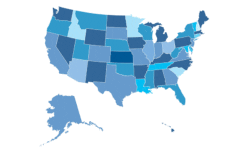Problem Parents Enable Teens to Abuse Prescription Drugs, Marijuana, Alcohol
WASHINGTON – The following is a press release from the National Center on Addiction and Substance Abuse (CASA). In a new survey conducted by the organization, it states that a parent’s failure to monitor their child’s behavior, can lead to the child abusing alcohol and drugs.
Problem parents-those who fail to monitor their children’s school night activities, safeguard their prescription drugs, address the problem of drugs in their children’s schools, and set good examples-increase the risk that their 12- to 17-year old children will smoke, drink, and use illegal and prescription drugs, according to the National Survey of American Attitudes on Substance Abuse XIII: Teens and Parents, the 13th annual back-to-school survey conducted by The National Center on Addiction and Substance Abuse (CASA) at Columbia University.
“This year’s survey reveals that too many mothers and fathers are problem parents who fail to take essential steps to prevent their kids from smoking, drinking or using drugs. By their actions-and inactions-by failing to become part of the solution, these parents become part of the problem of teen alcohol and drug abuse,” said Joseph A. Califano, Jr., CASA’s chairman and president and former U.S. Secretary of Health, Education, and Welfare. “Indeed, these problem parents enable-some even encourage-their 12- to 17-year olds to use and abuse tobacco, alcohol, and illegal and prescription drugs.”
Problem Parents & School Night Socializing
The CASA survey found that the later teens are out of the house hanging out with friends on school nights (Monday through Thursday), the likelier alcohol and drug use will be going on among them.
Almost half (46 percent) of 12- to 17-year olds report leaving their house to hang out with friends on school nights. Among these teens:
- 50 percent who come home after 10:00 p.m. say that drinking alcohol, smoking marijuana or other drug use occurs;
- 29 percent who come home after 8:00 p.m. and before 10:00 p.m. say that drinking alcohol, smoking marijuana or other drug use occurs.
But only 14 percent of parents say their teens usually leave the house to hang out with friends on school nights. “Parents who are not aware of such conduct by their teens, or are not candid about it, are problem parents whose failure to monitor their children’s school night activities increases the risk of drug or alcohol use,” said Califano.
Problem Parents & Prescription Drugs
For the first time in the CASA survey’s history, more teens said prescription drugs were easier to buy than beer (19 vs. 15 percent). The proportion of teens who say prescription drugs are easiest to buy jumped 46 percent since 2007 (13 vs. 19 percent). Almost half (46 percent) of teens say painkillers are the most commonly abused prescription drug among teens.
When teens who know prescription drug abusers were asked where those kids get their drugs:
- 31 percent said from friends or classmates;
- 34 percent said from home, parents or the medicine cabinet;
- 16 percent said other;
- Nine percent said from a drug dealer.
“By leaving abuseable and addictive medications like OxyContin and Vicodin around the house, thus making these drugs readily available to their children, these problem parents become passive pushers,” said Califano.
Problem Parents & Drugs in School
Almost two-thirds (63 percent) of high schoolers and one in five (21 percent) middle schoolers say drugs are used, kept or sold on their school grounds. The survey also found that 44 percent of high school students and 16 percent of middle school students know a place near their school, but off school grounds, where kids go to get high.
Ninety-seven percent of all parents surveyed and 96 percent of parents who believe their teens’ schools are not drug free say it is important that their teen’s school be drug free. Yet 42 percent of parents think their teens’ school is not drug free, and only 39 percent of those parents believe making the school drug free is a realistic goal. One-third of parents believe that the presence of illegal drugs in their teen’s school does not make it more likely that their teen will try them.
Problem Parents & Prevalent Pot
One-quarter of teens surveyed know a parent of a classmate or friend who uses marijuana; 10 percent of teens say this parent smokes marijuana with people the teen’s age.
Forty-two percent of 12- to 17-year olds can buy marijuana in a day or less; 23 percent in an hour or less. Compared to last year, this is a 35 percent increase in teens who can buy marijuana in an hour or less (23 vs. 17 percent) and a 14 percent increase in teens who can buy marijuana in a day or less (42 vs. 37 percent). From 2007 to 2008 this represents an increase of 1.4 million teens who can buy marijuana in an hour or less (5.8 vs. 4.4 million), and an increase of 1.1 million teens who can buy marijuana in a day or less (10.6 vs. 9.5 million).
Half of 16- and 17-year olds say that among their age group smoking marijuana is more common than smoking cigarettes.
Marijuana continues to be easier to buy than beer: 23 percent of teens find it easiest to buy compared to 15 percent who find beer easiest to buy.
Teen Alcohol Preferences
One-third of teens who drink say they like the taste of alcohol. When teens were asked what type of alcoholic beverage they prefer:
- 29 percent said liquor mixed with cola or something sweet;
- 16 percent said wine;
- 16 percent said beer;
- 13 percent said straight liquor.
While the same proportion of boys and girls prefer liquor mixed with something sweet (29 percent each), more boys than girls prefer beer (22 vs. 10 percent), and more girls than boys prefer wine (20 vs. 13 percent).
For the 13th year, drugs top the list of teen concerns. In response to an open-ended question, 28 percent of teens cite drugs as the biggest problem they face, compared to only 17 percent of parents who see drugs as the top teen concern.
Compared to the time when they were growing up, parents overwhelmingly say it is harder today to keep kids safe (84 percent) and to raise a teen “of good moral character” (72 percent).
“Every mother and father should look in the mirror and ask themselves if they are doing the parenting essential to help their child negotiate the difficult teen years free of tobacco, alcohol, and drugs,” said Elizabeth Planet, CASA’s director of special projects who managed this survey.
“Preventing substance abuse among teens is primarily a Mom and Pop operation,” noted Califano. “It is inexcusable that so many parents fail to appropriately monitor their children, fail to keep dangerous prescription drugs out of the reach of their children and tolerate drug infected schools. The parents who smoke marijuana with children should be considered child abusers. By identifying the characteristics of problem parents we seek to identify actions that parents can take-and avoid-in order to become part of the solution and raise healthy, drug-free children.”
CASA Aug. 14, 2008 press release
If you appreciated this article and want to receive more valuable industry content like this, click here to sign up for our FREE digital newsletters!
 Leading in Turbulent Times: Effective Campus Public Safety Leadership for the 21st Century
Leading in Turbulent Times: Effective Campus Public Safety Leadership for the 21st Century
This new webcast will discuss how campus public safety leaders can effectively incorporate Clery Act, Title IX, customer service, “helicopter” parents, emergency notification, town-gown relationships, brand management, Greek Life, student recruitment, faculty, and more into their roles and develop the necessary skills to successfully lead their departments. Register today to attend this free webcast!







